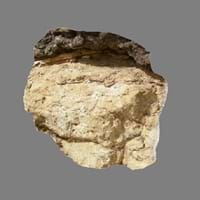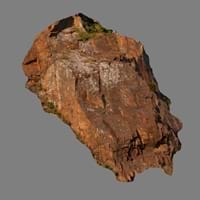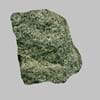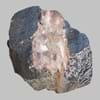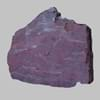Definition
Laterite rock is a type of Sedimentary rock which is rich in iron and aluminium, formed in hot and wet tropical areas
Granophyre is a type of granitic rock which consists of intergrown feldspar and quartz crystals in a medium to fine grained groundmass
Discoverer
Francis Buchanan-Hamilton
Unknown
Etymology
From Latin later brick, tile + -ite1
From German Granophyr, from Granit granite + Porphyr
Class
Sedimentary Rocks
Igneous Rocks
Sub-Class
Durable Rock, Soft Rock
Durable Rock, Hard Rock
Group
Not Applicable
Volcanic
Other Categories
Fine Grained Rock, Opaque Rock
Coarse Grained Rock, Fine Grained Rock, Medium Grained Rock, Opaque Rock
Texture
Earthy, Massive, Porphyritic
Granophyric
Color
Brown, Buff, Red
Black, Grey, Orange, Pink, White
Durability
Durable
Durable
Appearance
Rough and Banded
Veined or Pebbled
Interior Uses
Decorative Aggregates, Flooring, Interior Decoration
Bathrooms, Countertops, Decorative Aggregates, Entryways, Floor Tiles, Flooring, Homes, Hotels, Interior Decoration, Kitchens, Stair Treads
Exterior Uses
As Building Stone, As Facing Stone, Garden Decoration
As Building Stone, As Facing Stone, Bridges, Garden Decoration, Office Buildings, Paving Stone
Other Architectural Uses
Curbing
Not Yet Used
Construction Industry
Cobblestones, for Road Aggregate, Landscaping, Roadstone
As Dimension Stone
Medical Industry
Not Yet Used
Not Yet Used
Antiquity Uses
Artifacts, Monuments, Sculpture
Artifacts, Monuments, Sculpture, Small Figurines
Commercial Uses
An Oil and Gas Reservoir, Source of bauxite, Used in aquariums
Curling, Gemstone, Laboratory bench tops, Tombstones
Types
Not Available
Not Available
Features
Is one of the oldest rock, Very fine grained rock
Available in Lots of Colors and Patterns, It is One of the Oldest, Strongest and Hardest Rock
Archaeological Significance
Famous Monuments
Data Not Available
Data Not Available
Famous Sculptures
Data Not Available
Data Not Available
Pictographs
Used
Not Used
Petroglyphs
Used
Not Used
Formation
Laterite is a type of sedimentary rock which is generally a reddish weathering product of basalt.
Granophyre is a fine-grained, hard rock which is a type of metasomatite, essentially altered basalt. It forms with or without crystallization, either below the surface as intrusive rocks or on the surface as extrusive rocks.
Mineral Content
Aluminum Oxides, Biotite, Hematite, Hornblade, Iron Oxides, Manganese Oxides, Micas, Muscovite or Illite, Plagioclase, Pyroxene
Hornblade, Orthoclase, Plagioclase, Quartz
Compound Content
Aluminium Oxide, CaO, Iron(III) Oxide, FeO, Potassium Oxide, MgO, MnO, Sodium Oxide, Phosphorus Pentoxide, Silicon Dioxide, Titanium Dioxide
Aluminium Oxide, CaO, Iron(III) Oxide, FeO, Potassium Oxide, MgO, MnO, Sodium Oxide, Phosphorus Pentoxide, Silicon Dioxide, Titanium Dioxide
Types of Metamorphism
Not Applicable
Burial Metamorphism, Impact Metamorphism
Types of Weathering
Biological Weathering, Chemical Weathering
Biological Weathering
Types of Erosion
Chemical Erosion, Water Erosion, Wind Erosion
Glacier Erosion, Sea Erosion, Wind Erosion
Grain Size
Fine Grained
Medium to Fine Coarse Grained
Fracture
Conchoidal
Not Available
Porosity
Highly Porous
Less Porous
Luster
Dull
Dull to Grainy with Sporadic parts Pearly and Vitreous
Compressive Strength
Not Available
Cleavage
Not Applicable
Not Available
Toughness
Not Available
Not Available
Specific Gravity
Not Available
2.6-2.7
Transparency
Opaque
Opaque
Density
Not Available
2.6-2.8 g/cm3
Specific Heat Capacity
Not Available
Resistance
Heat Resistant, Pressure Resistant
Heat Resistant, Wear Resistant
Deposits in Eastern Continents
Asia
India
China, India, Iran, Saudi Arabia, Sri Lanka, Taiwan, Thailand, Turkey, Vietnam
Africa
East Africa, Western Africa
Angola, Egypt, Madagascar, Namibia, Nigeria, South Africa
Europe
England, Romania, Scotland
Austria, Belgium, Finland, France, Germany, Italy, Norway, Sardinia, Spain, Switzerland, The Czech Republic, Venezuela
Others
Not Yet Found
Not Yet Found
Deposits in Western Continents
North America
Canada, USA
Canada, USA
South America
Not Yet Found
Not Yet Found
Deposits in Oceania Continent
Australia
Central Australia, Western Australia
Not Yet Found
Laterite vs Granophyre Characteristics
Though some rocks look identical, they have certain characteristics which distinguish them from others. Characteristics of rocks include texture, appearance, color, fracture, streak, hardness etc. Laterite vs Granophyre characteristics assist us to distinguish and recognize rocks. Also you can check about Properties of Laterite and Properties of Granophyre. Learn more about Laterite vs Granophyre in the next section. The interior uses of Laterite include Decorative aggregates, Flooring and Interior decoration whereas the interior uses of Granophyre include Bathrooms, Countertops, Decorative aggregates, Entryways, Floor tiles, Flooring, Homes, Hotels, Interior decoration, Kitchens and Stair treads. Due to some exceptional properties of Laterite and Granophyre, they have various applications in construction industry. The uses of Laterite in construction industry include Cobblestones, For road aggregate, Landscaping, Roadstone and that of Granophyre include As dimension stone.
More about Laterite and Granophyre
Here you can know more about Laterite and Granophyre. The life cycle of a rock consists of formation of rock, composition of rock and transformation of rock. The composition of Laterite and Granophyre consists of mineral content and compound content. The mineral content of Laterite includes Aluminum Oxides, Biotite, Hematite, Hornblade, Iron Oxides, Manganese Oxides, Micas, Muscovite or Illite, Plagioclase, Pyroxene and mineral content of Granophyre includes Hornblade, Orthoclase, Plagioclase, Quartz. You can also check out the list of all Sedimentary Rocks. When we have to compare Laterite vs Granophyre, the texture, color and appearance plays an important role in determining the type of rock. Laterite is available in brown, buff, red colors whereas, Granophyre is available in black, grey, orange, pink, white colors. Appearance of Laterite is Rough and Banded and that of Granophyre is Veined or Pebbled. Properties of rock is another aspect for Laterite vs Granophyre. The hardness of Laterite is 2 and that of Granophyre is 6-7. The types of Laterite are Not Available whereas types of Granophyre are Not Available. Streak of rock is the color of powder produced when it is dragged across an unweathered surface. The streak of Laterite and Granophyre is white. The specific heat capacity of Laterite is Not Available and that of Granophyre is 0.79 kJ/Kg K. Depending on the properties like hardness, toughness, specific heat capacity, porosity etc., rocks are resistant to heat, wear, impact, etc.Laterite is heat resistant, pressure resistant whereas Granophyre is heat resistant, wear resistant.
